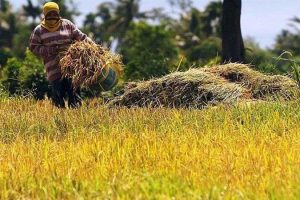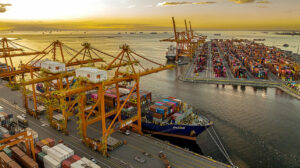Abandoning monocropping expected to boost farming households’ food security

By Patricia B. Mirasol, Reporter
IT’S DIFFICULT to imagine farmers being at risk of growing hungry, being so close to where the food is grown. But agricultural households that specialize too much in any one crop to maximize their land may find themselves in exactly that situation; avoiding such a predicament will require them to cultivate a variety of crops and farm animals.
“You can’t consume the same crop or food every day,” according to Ma. Elena P. van Tooren, executive director of the East-West Seed Foundation, Inc., adding that growing mixed crops also helps food security within a community because it makes food accessible, available, and affordable.
The East-West Seed Foundation is the corporate social responsibility arm of East-West Seed Philippines, which breeds and produces vegetable seed for tropical conditions.
“Grow local, consume local, shorten the food supply chain,” she said in an e-mail.
The Food and Agriculture Organization has said that one of the most advantageous features of home gardens is their “location adjacent to homes, close association with family activities, and a wide diversity of crop and livestock species to meet family needs.”
Per the World Food Programme (WFP), about a quarter of Philippine agricultural households are food insecure, compared to only 9% for non-agricultural households.
Regenerative agriculture — an approach that highlights intercropping, where multiple crops are planted together; agroforestry, the cultivation and use of trees and shrubs with crops and livestock in agricultural systems; and livestock integration — may likewise help contribute to food security.
The approach helps both farmers and the environment by “ensuring that the agri-ecosystem remains productive, with less damage to the environment,” said academician Eufemio T. Rasco, Jr., chair of the Agricultural Sciences Division of the National Academy of Science and Technology.
“Switching from the present practice to regenerative agriculture practices may temporarily compromise food production, however, as it takes time to heal a damaged agro-ecosystem,” he said.
“This damage resulted from years of monoculture, harmful tillage practices, and chemical farming,” he told BusinessWorld.
Mr. Rasco added that the Philippines could be uniquely resistant to regenerative farming because of the “limited” diversity of its food — dominated by rice — and high meat consumption.
“The existing practices in rice production is arguably the most environmentally destructive form of agriculture,” he said. “Meat has a higher environmental footprint than plants and fish. We need to shift to a more diverse diet, mostly plant-based.”
Ms. Van Tooren describes regenerative agriculture as “one level higher” than organic or natural farming, as it requires more planning.
“At this time, even natural or organic farming has limited adoption, with farmers claiming that commercial crop production is not possible with natural or organic methods and procedures,” she said.
Both organic or natural farming and regenerative agriculture require a paradigm shift, she added.
“We all know how difficult a paradigm shift can be. Pushing for organic or natural farming is paving the way towards regenerative agriculture,” Ms. Van Tooren said.
The global food and beverage manufacturer Nestlé, whose NESCAFÉ Plan helps smallholder Robusta coffee farmers increase yields and earnings, sees regenerative agriculture as feasible in the Philippines.
Project Coffee+, the Plan’s banner project, was implemented from 2018 to 2022 in the provinces of Bukidnon and Sultan Kudarat. A joint undertaking with the German development agency Deutsche Gesellschaft für Internationale Zusammenarbeit (GIZ), the project sought to equip 1,500 farmer participants to approach farming as a “business beyond subsistence levels,” said Jose Uy III, senior vice-president and head of corporate affairs, Nestlé Philippines, Inc.
Some 83% of all coffee in the country is grown in Mindanao, Mr. Uy told BusinessWorld.
The Bangsamoro Autonomous Region in Muslim Mindanao (BARMM) and Region XII (which covers the provinces of Cotabato, Sarangani, South Cotabato, and Sultan Kudarat in Mindanao) are two of the most food insecure regions in the country, WFP noted in October 2022. BARMM, in particular, is the only area that recorded food insecurity levels above 30%.
“These farmers have undergone extensive training to become agripreneurs who now practice farming as a business,” Mr. Uy said in an e-mail. As a result, he added, the participants’ average production grew to about 900 kg/hectare in 2021 from 235 kg/hectare in 2018.
The regenerative agriculture practices of composting, intercropping, agroforestry, and cultivating cover crops were among the techniques taught to the first batch of farmer participants. These, said Mr. Uy, strengthen resilience against climate change, increase harvests, help improve farm incomes, and promote coffee agriculture sustainability.
“As more farmers adopt these practices in and beyond coffee growing, the country’s agriculture sector as a whole can only become stronger, increasing our food security,” he added.




